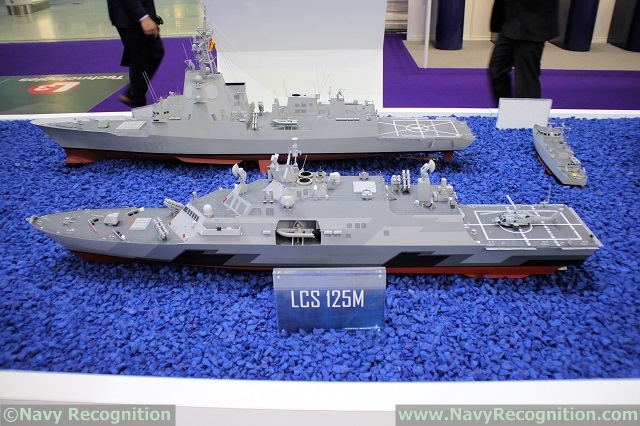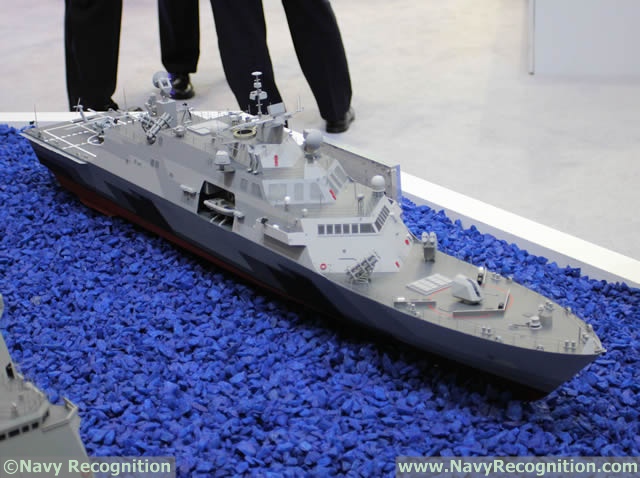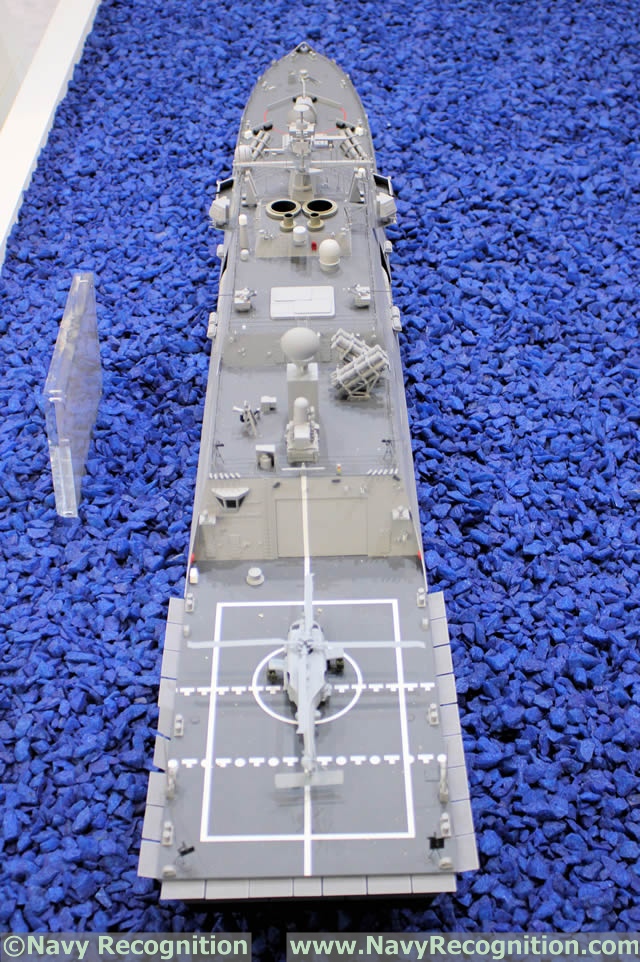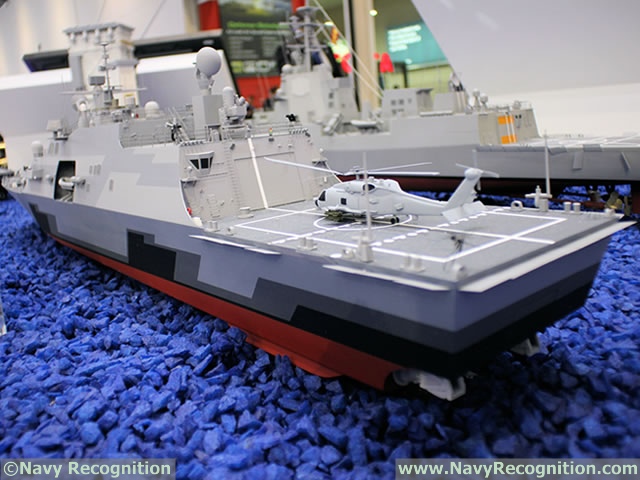|
|
|||
| a | |||
|
DSEI 2017 - Naval Show News
|
|||
|
|
|||
|
DSEI 2017: Lockheed Martin Unveils LCS 125M Concept Design for US Navy FFG(X)
|
|||
|
At DSEI 2017, the international defense trade show currently held in London, UK, Lockheed Martin unveiled the new LCS 125 meters. A company representative explained that this "concept" is representative of Lockheed Martin's answer to the U.S. Navy FFG(X) requirement.
|
|||
|
|
|||
 The new LCS 125M unveiled at DSEI 2017 The new LCS 125M unveiled at DSEI 2017 |
|||
|
|
|||
|
The US Department of Defense released a Request for Information (RFI) in July this year to let the industry know what the U.S. Navy is expecting from the Fast Frigate, Guided (Experimental) or FFG(X). The RFI says, "A competition for FFG(X) is envisioned to consider existing parent designs for a Small Surface Combatant that can be modified to accommodate the specific capability requirements prescribed by the US Navy."
The U.S. Navy wants a frigate that can keep up with carrier strike groups as well as conduct missions on its own. “The FFG(X) will normally aggregate into strike groups and Large Surface Combatant led surface action groups but also possess the ability to robustly defend itself during conduct of independent operations while connected and contributing to the fleet tactical grid.” The U.S. Navy expects the frigate to be survivable in complex scenarios: "FFG(X) will perform its missions in complex electronic warfare and anti-ship missile threat environments". The new Frigate would likely replace the troubled, very modular, Littoral Combat Ships (LCS) for typical "frigate missions". The U.S. Navy is requesting the FFG(X) to conduct the following missions: - Over the horizon anti-surface warfare (ASuW ) - Anti-submarine warfare (ASW) - Independently escort logistics ship convoys - Electronic warfare (EW) - Electronic signals intelligence and collection (ELINT) The frigate displacement isn't mentionned in the RFI, but it is likely to be comprised between 4000 tons (if the design is to stay as close as possible to the LCS) and in excess of 6000 tons (in view of the requirements set by the U.S. Navy, which is particularly interested on how the shipbuilders can fit VLS for ESSM and Standard Missiles and how many). The U.S. Navy intends to award a Detail Design and Construction contract for the first FFG(X) in 2020. The full RFI can be found at this link. |
|
|
|||
 The new LCS 125M features no less that 16x anti-ship missile The new LCS 125M features no less that 16x anti-ship missile |
|||
|
|
|||
|
Lockheed Martin latest Frigate design is based on the Freedom-class Littoral Combat Ship (LCS). The frigate measures 125 meters in length (compared to the 115 meters of the LCS). Lockheed Martin representatives didn't wish to go into detailed specifications in terms of displacement, width and draft. Its crew complement is 130 sailors (compared to a crew of 65 sailors on the LCS).
|
|||
|
|
|||
 Lockheed Martin's LCS 125M at DSEI 2017 Lockheed Martin's LCS 125M at DSEI 2017 |
|||
|
|
|||
|
The scale model unveiled at DSEI features 16x anti-ship missiles, likely LRASM (Lockheed stressed they can fit any type of missile selected by the customer): 8x forward, below the bridge and 8x more aft, on top of the helicopter hangar. There are also 16x Mk 41 VLS cells for ESSM and/or Standard Missiles. The main gun is a BAE Systems Bofors Mk110 57mm as per the RFI. There is a SeaRAM launcher on top of the helicopter hangar on top of the helicopter hangar as per the RFI as well.
|
|||
|
|
|||
 Additions on this frigate compared to the baseline LCS include Nulka decoy launchers, SEWIP, SeaRAM, fire control radars... Additions on this frigate compared to the baseline LCS include Nulka decoy launchers, SEWIP, SeaRAM, fire control radars... |
|||
|
|
|||
|
Other additions (when compared to the baseline LCS) inlcude two SEWIP EW antennas/jammers, 4x Nulka decoy launchers, 2x RWS (which appear to be the Seahawk by MSI Defence) and 2x fire control radars, all located on top of the main structure.
|
|||
|
|
|||
 The LCS 125M features bilge keels aft while the propulsion system remains unchanged The LCS 125M features bilge keels aft while the propulsion system remains unchanged |
|||
|
|
|||
|
The propulsion system remains unchanged, however we noted one last addition on the frigate's hull: the presence of bilge keels. They increase hydrodynamic resistance to rolling, making the ship roll less. Bilge keels are passive stability systems.
|
|||










